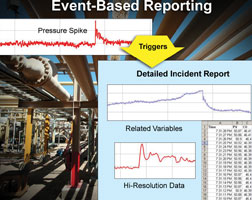
DNP3 for water and wastewater applications.
Distributed network protocol (DNP3) is a protocol that was developed to allow for flexible, secure communications between devices. DNP3 excels in telemetry applications, where requirements call for reliable communication with remote devices such as RTUs, scada HMIs and IEDs.
Knowledge-base on DNP3
* DNP3 is a layered protocol. Standard specifications at each layer ensure that equipment vendors can implement DNP3 protocols that ensure communication with each other. It is the unique functions and features of the DNP3 layers that lead directly to the benefits mentioned.
* MODBUS is an example of such protocols but because of limitations, venders created non-standard extensions for their own use. Unfortunately, these efforts rarely allowed interoperability with other equipment vendors.
* DNP3 was developed to support object-oriented data, including meta-data, and communication over long distances as well as interoperability with a variety of devices.
* DNP3 is an extensible protocol which allows growth without impacting the underlying security and reliable communications capabilities.
DNP3 use in water and wastewater
Standardisation and interoperability
DNP3 is an open, standards-based protocol. Various types of equipment, from a variety of vendors, can communicate with each other via DNP3: all devices handle and present data in the same way using the same data types and organised data structure. Vendor independence gives users great flexibility in designing current and future architectures.
Flexible communications
Examples of some of these communications methods include:
* Event-based reporting.
DNP3 supports event-based reporting, keeping irrelevant or redundant data from being transported. The user defines the thresholds and rules for data transfers that ensure critical data and alarms are sent immediately. There is no need for a polling cycle.
The efficiencies associated with the use of event-based reporting also allow features to be added to communication architectures resulting in the life extension of older networks.
Figure 1 illustrates how an event, such as a pressure spike, can trigger automatic reports for problem-solving. By capturing these bursts of high-speed data on demand, problem-solving capabilities are greatly increased, without major impacts to the communications infrastructure.

* Time-stamping and meta-data.
Using DNP3, data can be time-stamped allowing the user to determine the sequence of events and actual start/stop times. DNP3 also offers the capability to use meta-data, sometimes called ‘data attributes’, like the quality of the data, data format description, and a variety of alarm conditions.
* Unsolicited reporting.
With DNP3, when a critical event in the field requires immediate action, an unsolicited report can be triggered immediately from the remote device. This capability can be used to isolate upset conditions, increase security and enhance safety.
* Choice of media.
DNP3 supports many types of communications media including data radio, GPRS, leased line/dial-up, Ethernet, fibre-optics and satellite.
Security
Security is an increasingly critical aspect of water and wastewater systems and has experienced steep growth in attention during the past few years. With DNP3 it is possible to greatly improve security using both encryption and authentication.
Room to grow
* Flexibility to add new functions.
With DNP3, users can communicate, transfer files, reports, program changes and high integrity controls, allowing a great deal of flexibility within a secure and reliable framework.
* Industry-Specific Layers.
DNP3 is not static and unchanging but rather allows for extensions to be developed by end users and integrated within the protocol. Users can define object oriented data structures to transfer industry-specific information using DNP3.
* DNP3 saves time and money.
One of the most important reasons to upgrade to DNP3 is that it saves time and money. With DNP3 users can not only perform data communications, they can realise system diagnosis, fault finding, and configuration changes, translating into fewer costly and time-consuming visits to site.
For more information contact Jaco Hoogenboezem, SCADAGroup, +27 (0)83 282 5706, [email protected], www.scadagroup.co.za

© Technews Publishing (Pty) Ltd | All Rights Reserved